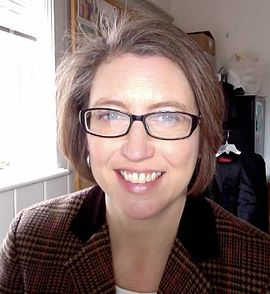
Dr. Gretchen McKay is a Professor of Art History and
Chair of the Department of Art and Art History at
McDaniel College in Maryland. She shares her experience teaching an art history course with Wikipedia.
Nearly a decade ago, the faculty at my small, liberal arts institution, McDaniel College, overhauled our entire general education program.
One of the features of our new program was a change in college writing instruction. We decided to move the first-year writing course to junior year, and made it specific to disciplines. That meant every department had to craft a writing experience for its students. The requirement in my department is a course we call “Writing in the Discipline: Art and Art History.” This course trains studio artists, critics, and art historians in the basics of art writing. That includes visual analysis, critical analysis, gallery exhibition reviews, and research on an artwork that culminates in an online exhibition.
This past fall was the first time I was slated to teach this course. I knew that the core element would be creating an exhibition entry on a work of art of each student’s choosing. That would involve significant research. As I thought about these goals, I realized that an important element was missing. Who was the audience?
I was part of their audience; I grade them. They were writing for each other, too. I learned a lot from our Director of College Writing about peer review, and I employed that strategy during the semester. But if our goals included training students to write in the discipline of their future careers, then digital writing needed to be included in the course. While planning the course, a colleague and digital mentor, Adeline Koh, shared that the Wiki Education Foundation was looking for instructors who would be doing a Wikipedia assignment. I bit, and left my name and contact information as a comment on her post.
I’m very glad that I did.
From that moment, Wiki Ed staff was in constant contact, answering questions and offering suggestions that helped clarify my goals. That assignment became the Wikipedia Edit Day. Students created accounts with quick dispatch on the first day of class. Then, students completed an online training program, provided by Wiki Ed, to learn the basics of language and formatting. The training was straightforward, with some kinks that Wiki Ed are working to fix (but it was nothing insurmountable).
Most of the work was research, and like any other course with a research component, I had to structure and scaffold the assignment. After choosing an artwork, students collected peer-reviewed sources and submitted them for my approval. To be sure they had something to say, students needed at least five peer-reviewed sources the week before the Wiki Edit day. Most had more than five. Students also had to complete an outline that planned out their research. The works ranged from a medieval tapestry to a Futurist painting by Boccioni, so there was a wide range of interpretations and approaches.
When the Edit Day finally came, students had varying reactions. We met in a computer lab, and the Wiki Edit Day class period (90 minutes) began with a general discussion of Wikipedia and what you find on a page. Our Writing Center Director led this discussion.
Then it was time for them to edit. A few students expressed concern that they “didn’t know enough” to be making comments. I assured them that they did know enough, and reminded them that this was why they had been researching prior to the Edit session. I encouraged them to think about their research to frame their contribution. In the future, I will offer students more specific items to think about ahead of the actual Edit session.
The real “a-ha” moment for me as an instructor, and what made me a believer in this assignment, came at the end of the Edit session. I had one of our librarians lead a post-edit discussion. Two comments made my teacher’s heart leap:
One student said, “I realized while I was doing this that I was writing for real people. People were going to read my writing and see my research. That was kind of terrifying, but also really kind of cool.”
Another student realized she couldn’t interpret, because Wikipedia is for factual information. Most of her work to date on her painting was interpretive. Even the descriptions of her painting were interpretive. I include here a link to her entry.
Part of my student’s contribution was to describe the Madonna and Child, a painting that is featured at the top right of the page for the artist. My student’s description reads, “The Madonna boasts timeless stylized features of the Virgin. Her fingers, nose, and neck are exaggeratedly long and slender and her face itself is elongated and narrow. Her soulful eyes are large and intensely focused, lending her visage a particular elegance.” We talked about how her description was leaning towards ekphrastic writing, a prose style that attempts to recreate the image in the viewer’s eye, rather than factual description. It became a joke in the class to see how long that description remained on that page. Many members of the class checked from time to time to see if it was still there (it is!).
This assignment helped my students understand what I had hoped they would: that writing for different audiences might change your word choices.
They enjoyed learning a bit more about the “inner workings” of Wikipedia. All said that they would think about Wikipedia differently the next time they used it for research or data. One student liked the contrast of writing for the online exhibition (you can see my students’ work here) and writing for Wikipedia.
Because of the success of this assignment, I will use Wikipedia again in a future class. I encourage others to do the same, at my institution and beyond.
Image: “Berlinghiero Berlinghieri 005” by Berlinghiero Berlinghieri – Metropolitan NY. Licensed under Public Domain via Commons.
